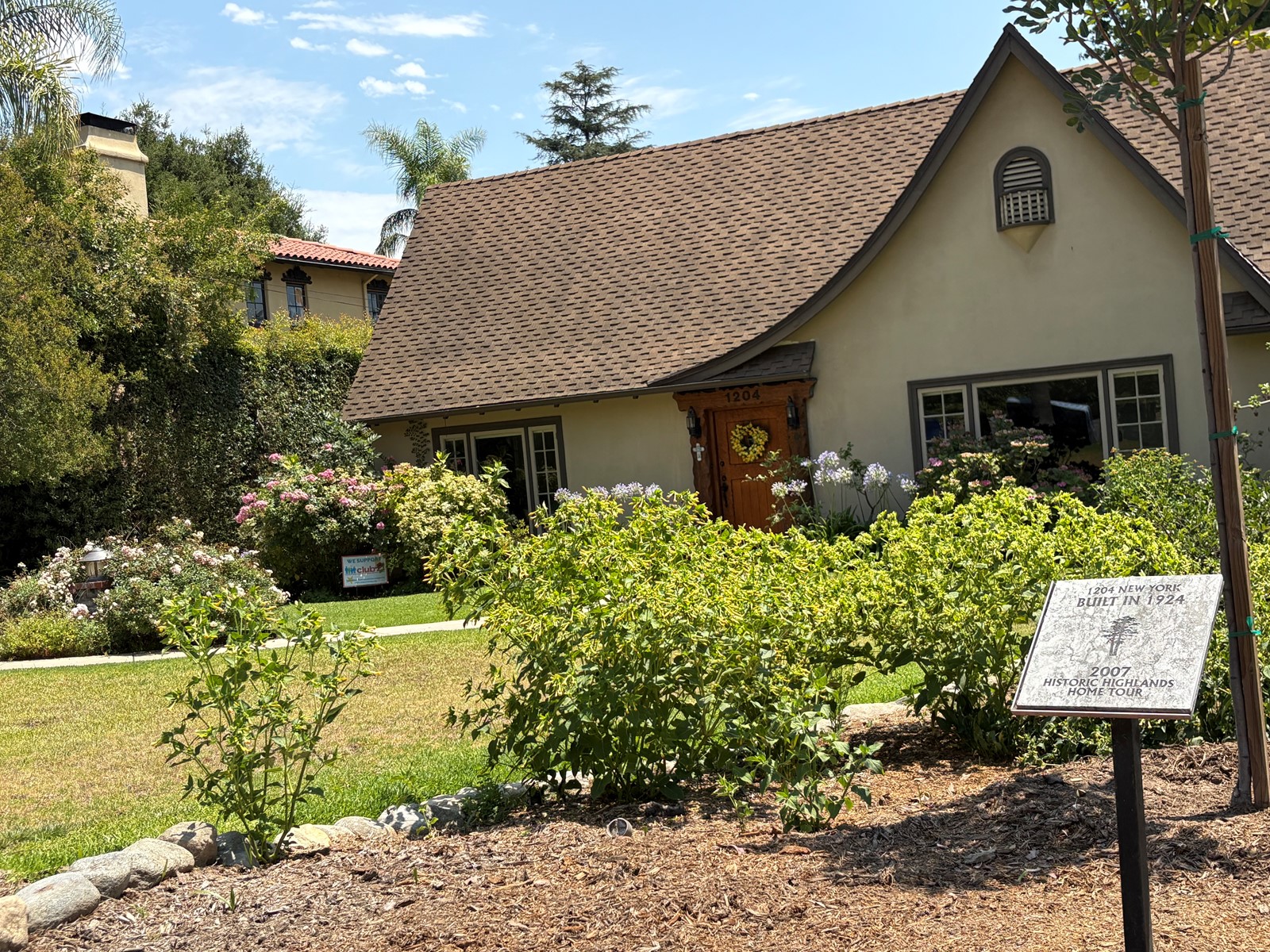
There may be some good news coming out of Altadena.
A portion of a neighborhood of historic homes not touched by the devastating Eaton fire is up for historic landmark status due to the area’s ties to the citrus industry and a legendary railroad engineer and its stunning variety of architectural styles, which has helped shape the unincorporated community since the 1920s.
An application for historic and landmark designation to create the Historic Highlands Historic District in Altadena will come before the Los Angeles County Board of Supervisors on Tuesday. A public hearing and vote are set for the meeting, which will start at 9:30 a.m. at the Kenneth Hahn Hall of Administration in downtown L.A.
For Altadena, a community of 40,000 at the base of the San Gabriel Mountains that lost 70% of its housing and commercial stock in the January fire, this could be a healing balm applied in a symbolic way.
“It shows in the aftermath of the fire, this as a positive movement, that we are recognizing and preserving our historical resources and our wonderful architecture in Altadena,” said Michele Zack, a town historian who lost her home in the fire and the author of several local history books on Altadena and Sierra Madre.
The proposed key-shaped district would stretch west-east along New York Drive, from about Lake Avenue to Hill Avenue, with a wider swath plunging south between Catalina Avenue and Mar Vista Avenue to Washington Boulevard. It would include 78% of the single-family properties of the unincorporated Historic Highlands neighborhood, about 77 residences. Most are shining examples of such historical architectural styles as Craftsman, Spanish Colonial Revival, Tudor, American Foursquare, Neoclassical, English cottage, Minimal Traditional and ranch.
Primary examples of properties in the proposed district were built from 1905 to 1959, according to a county report. From the flared eaves and pagoda-style roofs of the Craftsman homes, to the prominent columns of the Neoclassical style, the homes are often perfectly restored examples of what made up the Historic Highlands originally.
“It was on the verge of being run-down, but now it has been upgraded,” Zack said. “All the kids go there to trick or treat.”
Aside from the beauty of the historic homes, tree-lined streets and manicured landscaping, there is a deep connection to two historical Altadena/Pasadena pioneers: Ezra Dane, an orchardist who settled there in 1883, and David Macpherson, who helped engineer the famed Mount Lowe Railway. Also known as the Echo Mountain Incline Railway, it started taking passengers up the mountain on a railway to the sky from Pasadena on July 4, 1893. Macpherson teamed up with Thaddeus S. C. Lowe, who worked as a Union spy during the Civil War before moving to Pasadena in 1888.
“Macpherson bought land there, and developed the subdivision,” Zack said.
He named some of the streets Topeka and Atchison, after railroads. He lived in his home at 1075 E. Topeka St., which is still standing today, she said.
Dane was involved in citrus growing in the Historic Highlands, until he too began to sell off his lots for housing developments, the report stated. Zack said the citrus industry, mostly oranges, grew in small plots in the Historic Highlands, first in the Pasadena Historic Highlands neighborhood, which abuts the Altadena neighborhood, and then in the Altadena neighborhood.
The connections to Lowe, Macpherson and the citrus industry in general add to the importance of the proposed district.
“It is totally rich in history. It should be a designated area,” Zack said.
She said Altadena Heritage has been on board with the designation. She is a former member of the group’s board of directors.
On Sept. 23, 2022, the county Historical Landmarks and Records Commission voted in favor of making a portion of the Historic Highlands in Altadena a county historic district.
The county Regional Planning Commission voted to move forward with the designation on Jan. 11, 2023. The Board of Supervisors will consider an ordinance for approval of the designation and landmark status.
The report from the Historical Landmarks and Records Commission stated that 55% of property owners within the proposed district have consented to the designation.
However, Judy Rubin, who lives in a historic 1924 Mediterranean-style home at 1345 E. Woodbury Road, said she consented and signed a document in favor of being included but her property was denied inclusion. She said the reason given was that her block had too many modern homes on it, so the block was excluded.
“I would love to be a part of it if that’s possible,” she said Friday. “I would love, after my time in my home, if the house could be preserved.”
The properties listed in a report from the Regional Planning Commission lists many homes on the 1000 and 1100 blocks of East Woodbury, but not her block.
Zack said she heard other residents saying they don’t want to be included because they don’t want additional government regulations. She wants to see more homes added to the proposed district.
The designation would restrict density to no less than one dwelling unit per acre, consistent with the Altadena Community Plan for low density, according to the county report. At Regional Planning Commission hearings, two members of the public testified in support and no one testified in opposition, the county report stated.
Zack said those in historic districts can get tax breaks for restoration work. She also said the designation would not allow wholesale changes to the outsides or facades of properties that diverge from the architectural style.
“The biggest advantage is your property values go up,” she said. “Historic districts gain value.”


 PREVIOUS ARTICLE
PREVIOUS ARTICLE
